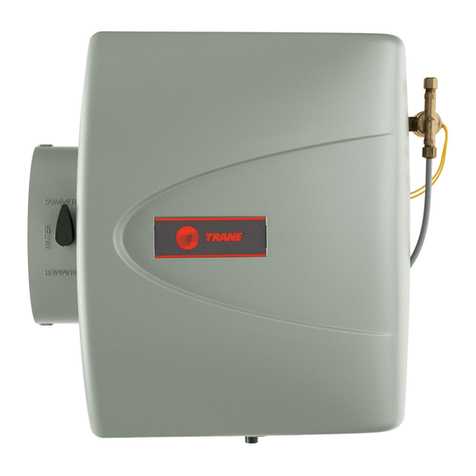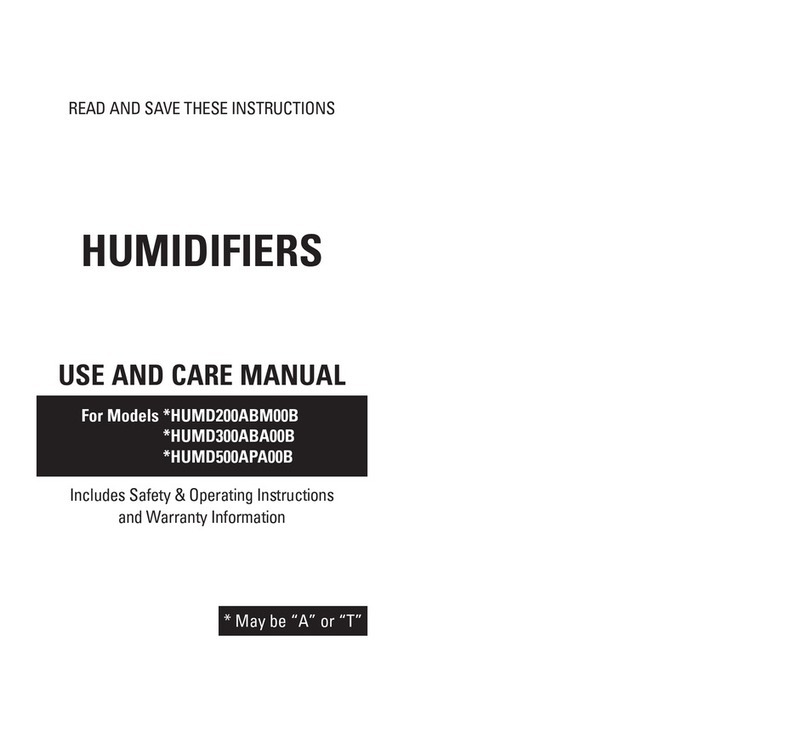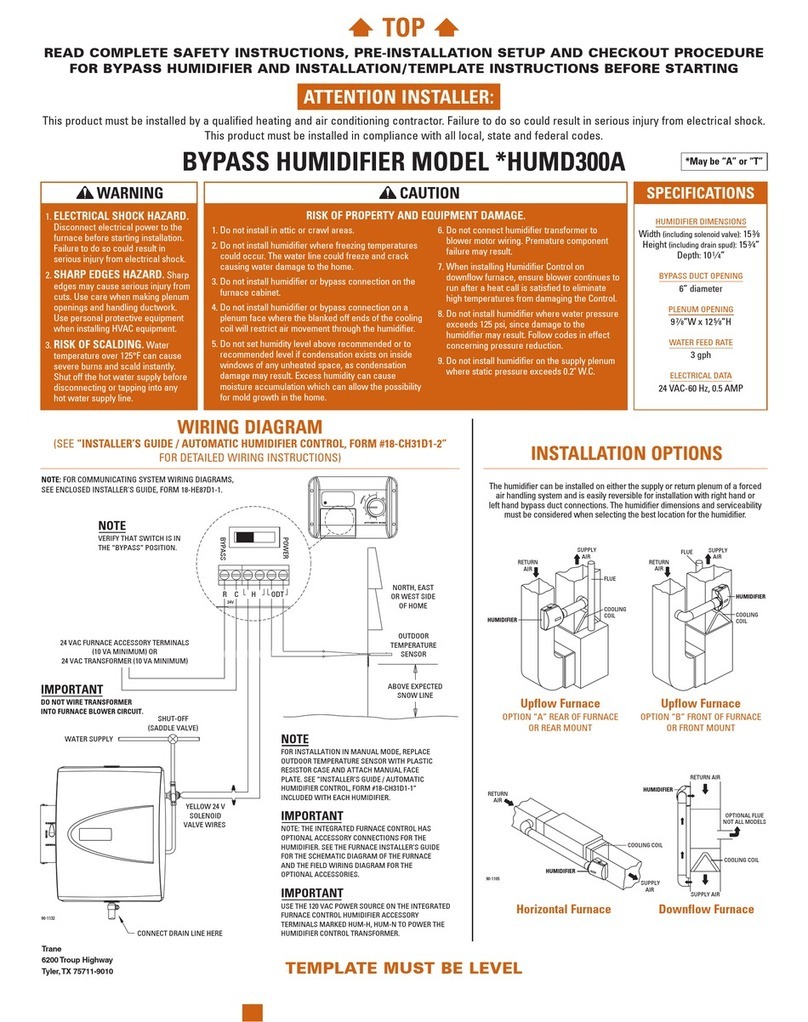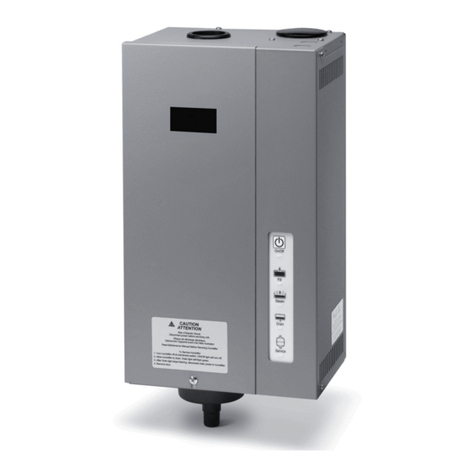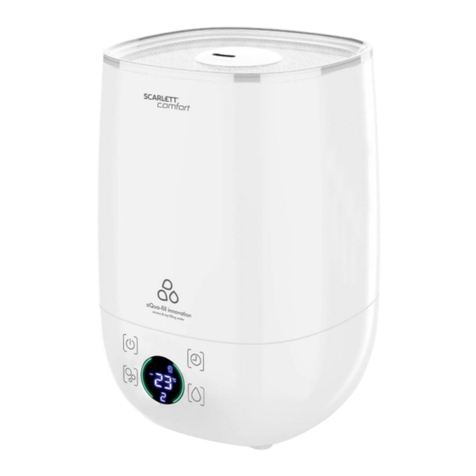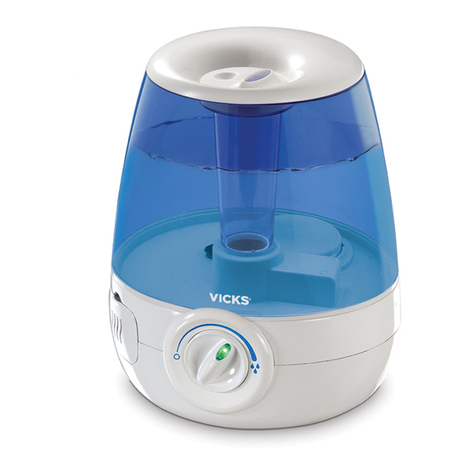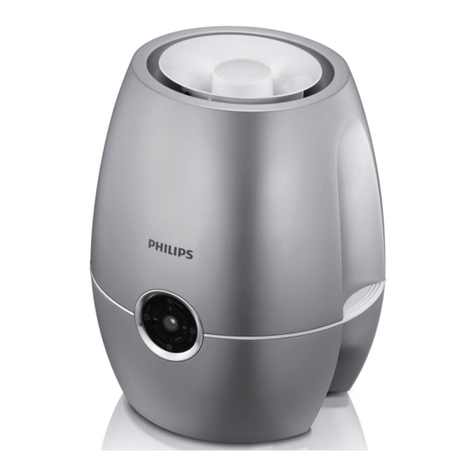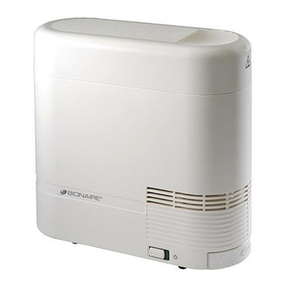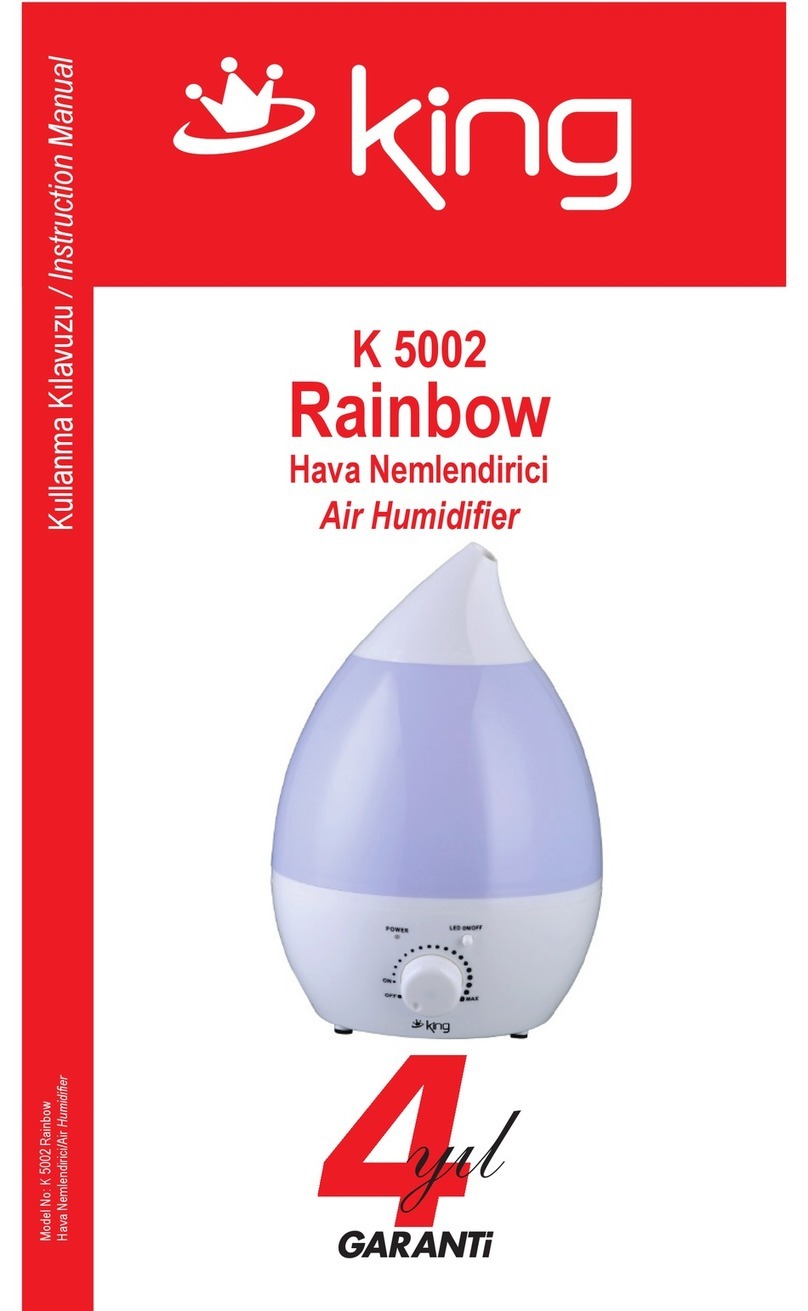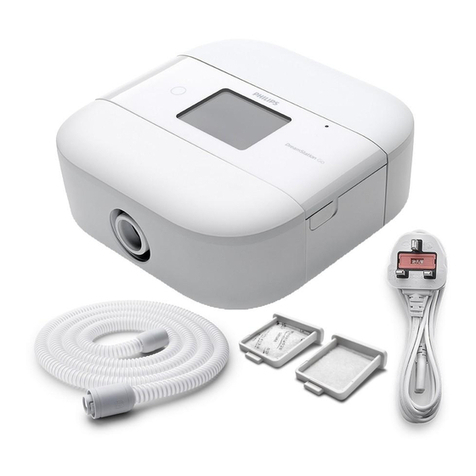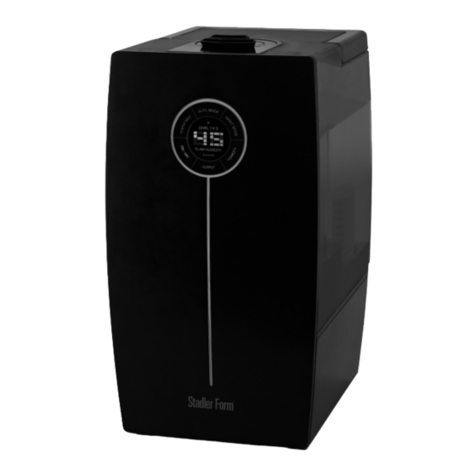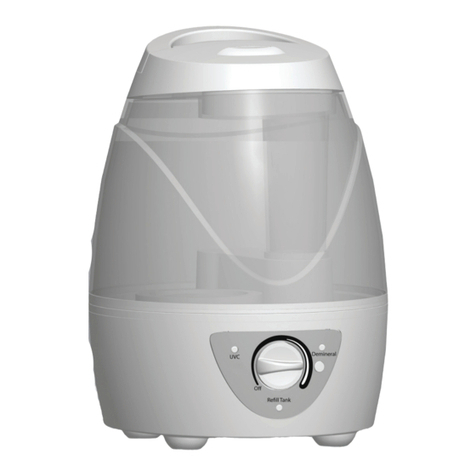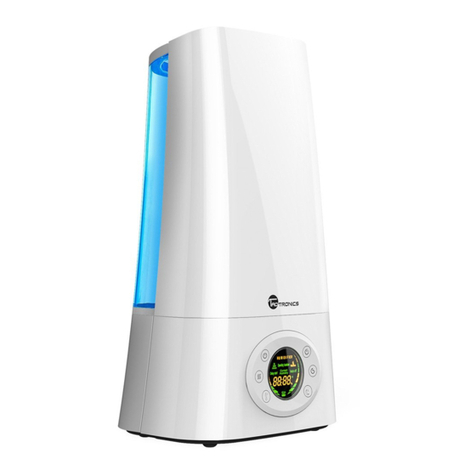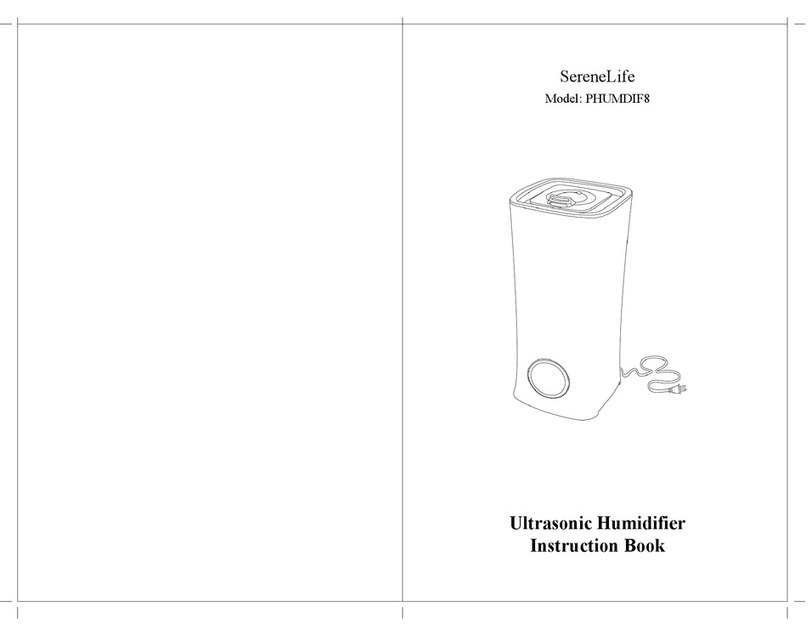
SPECIFICATIONS & DIMENSIONS (CONTINUED)
Minerals that are naturally found in water contribute to water’s electrical conductivity; water conductivity is measured in microsiemens per
centimeter (uS/cm). Mineral content, also described as “water hardness” is usually measured in grains per gallon. Variation is found among
water samples but generally the higher the mineral content, the higher the conductivity.
The Steam Humidifier is designed to operate on water with conductivity between 100 and 1,250 uS/cm. This correlates loosely with water
hardness between 3 and 36 grains/gallon. Water that is considered “hard” and softened water work well in the Steam Humidifier. The humidifier
makes steam when plumbed to low-conductivity water but it takes longer to reach nominal current.
Two canisters are available for use with the Steam Humidifier. The Model 8043RP canister is used in most installations and is optimized for
“hard” and softened water. The Model 8043RP typically works best when the Steam Humidifier is installed at 208 or 240 VAC. If the Steam
Humidifier has a yellow steam light in the first two weeks of running with a new canister, the Steam Humidifier is taking a long time to reach its
nominal current; changing to the Model 8043LCRP canister will prevent this from happening in the future.
The Model 8043LCRP canister is optimized for use in areas where the water conductivity is less than 300 uS/cm or when the Steam Humidifier is
installed at 120VAC. The Model 8043LCRP should not be used with softened water. If the Steam Humidifier is draining too frequently, the water
conductivity is too high; changing to the Model 8043RP canister will reduce the drain frequency.
As water in the canister boils and turns into steam, minerals are left behind. Minerals remaining in solution increase the conductivity of the
water. Minerals also deposit onto the submerged portions of the electrodes rendering those areas ineffective. As this occurs, the level of water
in the canister rises to expose uncoated electrode surface.
There are benefits and trade-offs to consider when the application allows a choice between hard and softened water:
Hard water: The benefit of hard water is less frequent draining and filling than with soft water, which results in better energy and water
efficiency and more consistent steam output. However, canister replacement could be more frequent with hard water, because mineral deposits
coat the electrodes. The harder the water, the more frequent the need for a new canister.
Softened water: The benefit of softened water is longer canister life (depending on water chemistry) than with hard water, because softened
water does not coat the electrodes nearly as much as hard water. However, softened water ions stay in solution to much higher concentrations
than hard water ions. This requires more frequent draining and filling, which results in lower energy efficiency, higher water consumption and
less consistent steam output.
TABLE 2 – Water Quality Guidelines
Conductivity
(uS/cm) Grains/Gal Hardness Recommended Canister by Voltage
120VAC 208VAC 240VAC
75-100 0-3 Naturally Soft Installation Not
Recommended 8043LCRP 8043LCRP
100-300 3-9 Naturally Soft 8043LCRP 8043LCRP 8043LCRP
300-500 9-15 Slightly Hard 8043LCRP 8043RP 8043RP
500-650 15-20 Moderately Hard 8043LCRP 8043RP 8043RP
650-850 20-25 Hard 8043LCRP 8043RP 8043RP
850-1250 25-36 Very Hard 8043LCRP 8043RP 8043RP
above 1250 above 36 Extremely Hard Installation Not Recommended
Softened 8043RP 8043RP 8043RP
WATER QUALITY
6
